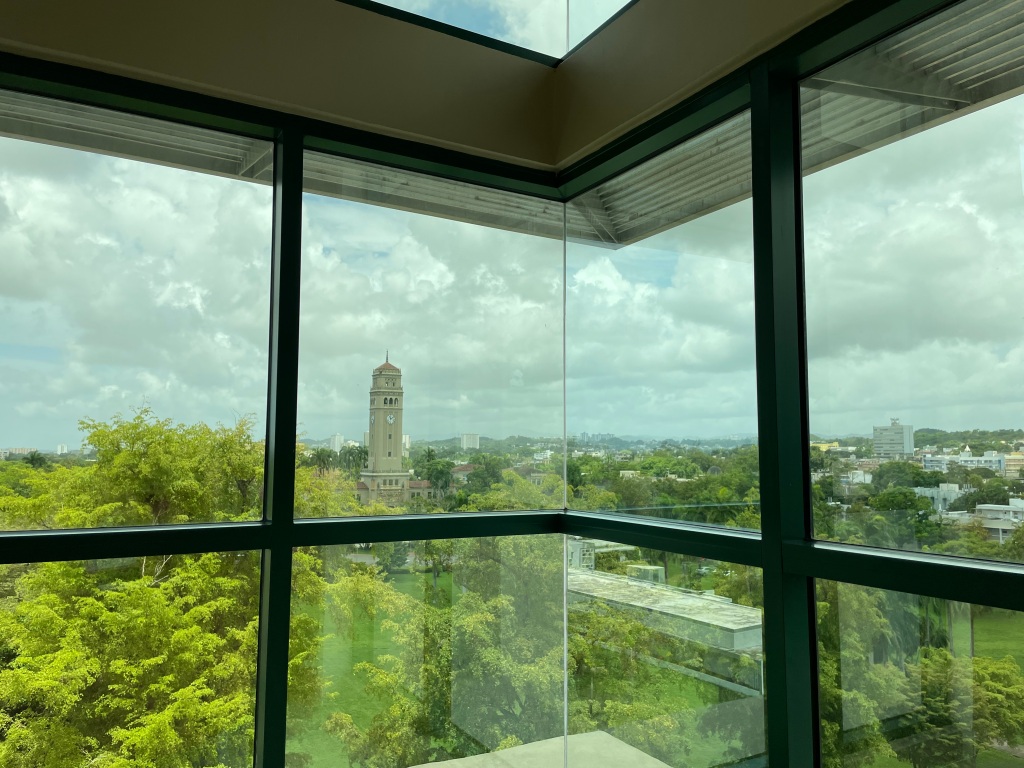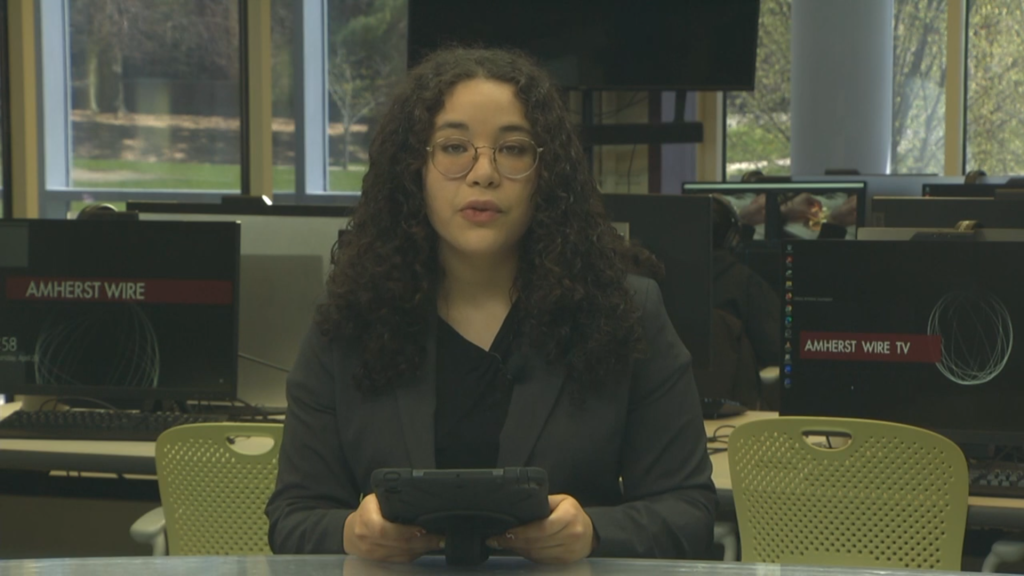In Puerto Rico, a major political debate centers on whether the island should pursue statehood within the United States, remain a freely associated state, or become a completely independent nation. Such a debate has influenced the creation of political parties throughout history that range in understandings of a post-colonial status. Currently, Puerto Rico’s dominant political parties are the New Progressive Party, the Popular Democratic Party, and the Independent Party. The New Progressive Party focuses on preserving Puerto Rico’s current status as a free associated state, the Popular Democratic Party emphasizes leveraging the economic assistance of the United States for further development and advocating for the island to become a state. Meanwhile, the Independent Party in the island aims to entirely disconnect Puerto Rico from the United States. These ideologies are the current dominating parties in the ballot. All political parties serve one goal: to comprehend and address the post-colonial status of Puerto Rico.
Throughout history there have been other parties such as the Party of Puerto Rican union and the liberal party, all of which have taken influence from Marxist theory that influenced the labor movement of the island. This essay delves into the intellectual underpinnings of Puerto Rico’s contemporary independence movement, particularly its historical roots and relation to labor. To achieve this, it will examine the historical context that has shaped the current state of the independence party within its relation to labor. Additionally, it will explore the party’s connection to the post-colonial struggle, emphasizing themes of self-determination and acts of violence. Ideologies of self-determination and instances of violence that have played pivotal roles in shaping the movement throughout its historical evolution, in relation to labor practices.
Puerto Rico’s independence movement has experienced several key developmental milestones throughout time that used acts of violence as a means to convey the party’s desire to free itself from American rule. Two pivotal historic moments are the Grito de Lares, 1868, and the Grito de Jayuya, 1954. The Grito de Lares movement in 1868, also known as the Lares uprising, was a pivotal moment for the independence movement. The uprising was conducted by independence leaders who sought for a free republic of Puerto Rico, and liberation from Spanish colonial rule. The movement at the time called for the complete secession of the Puerto Rican government from Spanish powers. The rebels were able to take over the municipal seat of government, depose Spanish officials by carrying them to jail along with the most prominent merchants of the area (Wagenheim). At the time the independence movement was at its birth. Citizens rebelled against Spain due to work conditions. Wagenheim recounts the historical context: “The fact that the colonial regime discriminated against the Creoles in the area of government employment is corroborated by the evidence supplied by the rebels about the nature of their jobs at the time of the Lares uprising” (Wagenheim).
The poor conditions of work sparked many underpinnings of the contemporary independence movement, relating them to Marxist theory in correlation with the labor union movement. The independence party began as an outrage of working conditions cast on natives by Spanish rule, illustrating a clear picture of how colonial rule manifested itself into the lives of Puerto Rican citizens. Furthermore, when U.S. forces came into Puerto Rico, the nationalist mindset was shaped by these same motivations of poor working conditions, whereas this time, the U.S. economy had now pushed coffee agriculture to a “Second position” (Anderson). Once again, the independence movement was pushing back advances from colonial powers that would put them in disadvantageous economic positions
Another pivotal point for the independence movement stems from the second time in Puerto Rican history where the movement had been acknowledged by political actors, following planned insurrections in Puerto Rico and the U.S.. After Puerto Rico had been conquered by the United States in 1898, the Paris treaty was signed. The treaty, which was written after the Spanish-American War, established U.S. control over Puerto Rico, Guam and the Philippines. The independence movement in the island now sought independence from a new colonial figure which was the United States. The independence party became mobilized following the leadership of Pedro Albizu Campos who was the leader of the nationalist party in Puerto Rico. In the 1950s Campos organized and prepared several insurrections in order to convey the message of independence. The uprising involved nationalist militias attacking police stations as well as the governor’s mansion in the island capital, San Juan. Party members also traveled to the United States and attempted to assassinate president Harry Truman. The combatants only gained success in Jayuya, where it received the name Grito de Jayuya.
Both the Grito de Lares and Grito de Jayuya when translated to English mean the Scream of Lares/Jayuya. The mere name itself relates to Fanon’s notion of acts of violence. For in both instances, to scream, is a manifestation of anger through the voice or the body. Fanon writes about the psychological effects of colonization and how the reaction from the oppressed can manifest itself in the body. He writes about the idea of the dance of the colonized as an act of an “extremely ritualized, pantomime where the exorcism, liberation, and expression of a community are grandiosely and spontaneously played out through shaking of the head, and back and forward thrusts of the body.” (Fanon.20). This exemplification, when compared to the independence movement, views it as an act of expression in rebuttal of oppression. Where in both times, the need for an independent government, stems from the idea of freedom from oppression of work conditions similar to that of slavery. The movement sees independence as a necessary means of survival by obtaining self-determination.
Fanon writes “The colonized subject discovers reality and transforms it through his praxis, his deployment of violence and his agenda for liberation” (Fanon. 21) talking about how when a subject wakes up the revelation of having been colonized, they form an “agenda of liberation” emphasizing the existence of a party whose sole purpose is to politically represent the need for liberation from an oppressive force. Both instances of the scream of Lares and the scream of Jayuya, demonstrate an aspect of the independence movement that is important to its growth and how it manifests itself in the present age. The independence movement is characterized for the passionate need of cultural preservation and autonomous decision making, both attributes that could be achieved through an independent capital.
Understanding how the independence movement was historically created by opposing unfair labor conditions, can also help us understand the state of the political party in today’s age. Grito de Lares began as a protest against working conditions. Additionally, the U.S. economy shifted into Puerto Rico and pushed the coffee market downward, which created a consolidation of people who rejected assimilation into the new economy and created a sense of Puerto Rican nationalism (Anderson). These two key moments in the creation of the independence party in relation to the economy and labor, begin to create an illustration of the intellectual motives behind the independent party. Fighting off the oppression of economic and labor maltreatment, are part of the historic foundation of the party, that instills itself into today’s age.
A core challenge currently faced by the island is the extent of fiscal control exercised by the United States over its federal budget. Granting a group the authority to dictate income also confers upon them the ability to shape the democratic process for the very community whose income they control. This is the system that the Independent Party of the island has steadfastly sought to dismantle from its inception. The party’s envisioned solutions align with W.E.B. Du Bois’ concept of income democracy, where he posits, “Democracy in determining income is the next inevitable step to democracy in political power” (Du Bois, 709). The Independent Party aims to establish a democratic economic framework in Puerto Rico, a move that not only addresses fiscal autonomy but also lays the foundation for democratizing political power on the island, ultimately fostering self-determination.
Neocolonialism is presented through acts of unfair labor practices into today’s age. Currently, the unemployment rates are high, and the poverty line on the island is significantly low, reflecting deep-seated economic issues.. The problem has shifted from historically being about unfair work conditions to now being about unfair wages that do not allow Puerto Rican citizens to live comfortably. Furthermore, the poverty line of the island is well below the average.
Contemporary Puerto Rican politics grapples with the multifaceted issues of economic dependency, political self-determination, and the preservation of cultural identity. The island’s current status, as an unincorporated territory of the United States, has created a dynamic where decisions regarding Puerto Rico’s federal budget and economic policies are largely determined by external forces. This situation illustrates a continuation of neocolonialism, perpetuating economic disparities and limiting the island’s ability to control its own decisions.
The Independent Party’s persistent struggle to break free from this neocolonial framework is underscored by its call for economic democracy. As W.E.B. Du Bois argued, achieving democracy in determining income is a crucial step toward achieving broader political democracy. By gaining control over its economic policies, Puerto Rico could further democratize political power within the island, fostering a sense of self-determination that extends beyond economic considerations.
The island’s present economic challenges, characterized by low employment rates and a poverty line below the national average, highlight the urgent need for economic reform. Unfair wages and economic disparities have become pressing issues, prompting the Independent Party to advocate for a more just economic system that prioritizes the well-being of its citizens. The historical foundations of the independence movement, rooted in the opposition to exploitative labor conditions, have evolved into a contemporary struggle against economic injustices that perpetuate inequality. The party’s vision extends beyond political independence; it envisions a Puerto Rico where economic policies align with the principles of social justice, allowing its citizens to lead dignified lives.
As Puerto Rico navigates its political future, the intellectual motives of the independence movement remain central to the discourse. The screams of Lares and Jayuya echo through time, symbolizing the ongoing fight against oppression and the fervent desire for self-determination. The path forward involves addressing not only political status but also economic structures, ensuring that Puerto Rico can shape its destiny in a manner that respects its people, culture, and right to determine its own course.
The Independent Party’s vision for Puerto Rican independence is multifaceted, encompassing political, economic, and cultural dimensions. As policies are formulated and refined, the party strives to pave a pathway towards a future where Puerto Rico stands as a sovereign nation, economically self-reliant, culturally vibrant, and democratically governed by its people. In this vision, Puerto Rico emerges not only as a geographical entity but as a testament to the resilience, aspirations, and unique identity of its people.
In conclusion, the debate over Puerto Rico’s future status — statehood, continued association, or full independence — is deeply rooted in its political history. The New Progressive Party, Popular Democratic Party, and Independent Party represent diverse visions, united in addressing the island’s post-colonial identity. Exploring the intellectual roots of the independence movement reveals a narrative woven with historical context, labor struggles, and acts of resistance. Pivotal moments like the Grito de Lares in 1868 and Grito de Jayuya in 1954 symbolize a yearning for autonomy, rooted in opposition to unfair labor conditions.
The Independent Party’s pursuit of economic democracy, echoing W.E.B. Du Bois, envisions an economically just Puerto Rico, addressing contemporary challenges of unfair wages and disparities.In navigating its future, Puerto Rico draws from historical struggles. The Independent Party’s vision embraces sovereignty, economic autonomy, and cultural preservation. The screams of Lares and Jayuya symbolize an enduring fight for self-determination. The path forward involves shaping both political and economic frameworks, ensuring Puerto Rico’s destiny aligns with its people’s aspirations. In this vision, Puerto Rico emerges as a sovereign, resilient nation, embodying its unique identity and the spirit of its people.
Citations:
Burke, Edmund. “Frantz Fanon’s” The Wretched of the Earth“.” Daedalus (1976): 127-135.
Du Bois, William Edward Burghardt. The African roots of war. Adam Matthew Digital, 1915.
International Encyclopedia of Revolution and Protest, ed. Immanuel Ness, Blackwell Publishing, 2009, pp. 2766–2774
Anderson, Robert W. “Political Parties and the Politics of Status.” Caribbean Studies, vol. 21, no. 1/2, 1988, pp. 1–43. JSTOR, http://www.jstor.org/stable/25612928. Accessed 14 Dec. 2023.
Jimenez De Wagenheim, O. (1985). Puerto Rico’s Revolt For Independence: El Grito De Lares (1st ed.). Routledge.






Leave a comment